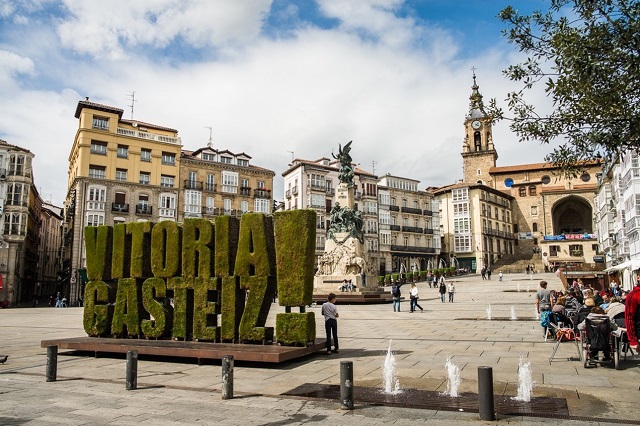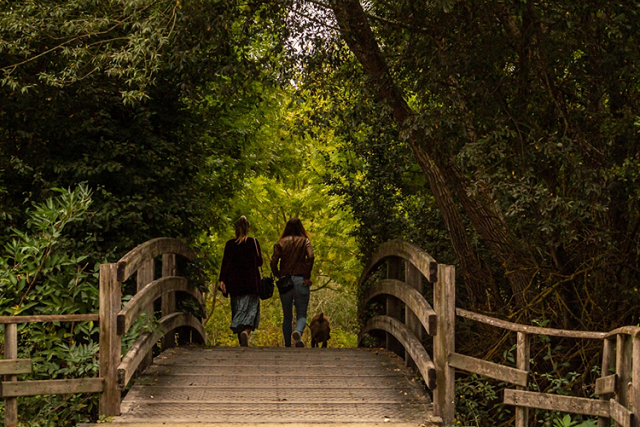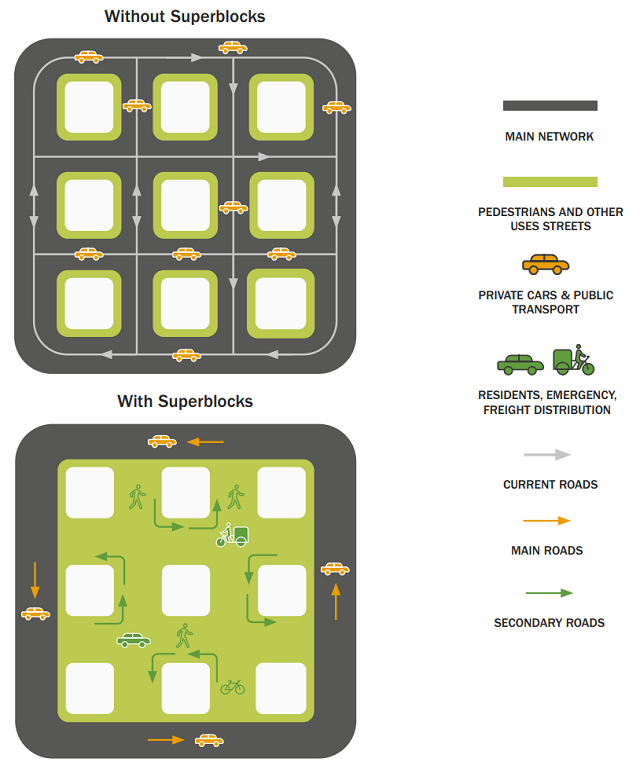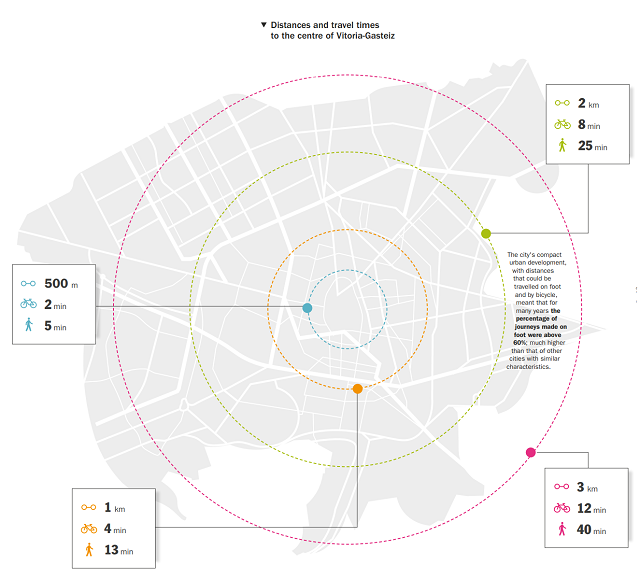
Like many European cities in the 20th century, Vitoria-Gasteiz, capital of the Basque Country in Spain, experienced rapid population growth, followed by increased motorization and urban sprawl. What makes Vitoria-Gasteiz stand out is the coordinated action its leaders and community took to better allocate public space and ensure the city did not become car-centric. Since the mid-1970s, the city has worked to prioritize sustainable urban development through improved walkability, access to natural spaces and implementation of Spain’s first bike lane network.
In a recent WRI webinar, Vitoria-Gasteiz city council members discussed the city’s journey toward sustainability and livability, from successes to remaining challenges. The city highlights four key lessons on building safer, greener and more accessible cities through land use and mobility changes.
1. Foster Political Consensus With Clear Plans and Community Engagement
Achieving political support for Vitoria-Gasteiz’s sustainable development policies involved the creation of a detailed city strategy that everyone could rally around.
In the early 2000s, Vitoria-Gasteiz saw a rapid rise in private car use that drove up congestion and air pollution. In 2006, cars accounted for 37% of trips, and transport overall was responsible for 29% of the city’s emissions. In 2007, the city established a public consultation that resulted in a Citizens’ Pact for Sustainable Mobility, an agreement that led to the city’s first Sustainable Mobility and Public Space Plan (SUMPSP). The plan aimed to reduce private car use, promote sustainable transport and reallocate public space from cars to people.
The city has been able to garner widespread support for this plan and many of its other sustainable development policies by consistently involving residents in the planning process through workshops, media campaigns, town halls and other events. The Citizen Forum for Sustainable Mobility, established in 2006, is comprised of representatives from social, political and technical groups across the city, and offers a meeting and training space to improve knowledge about sustainable mobility in civil society. Through regular meetings, it has been closely involved in the development and implementation of the SUMPSP and helped turn citizens and social organizations into critical actors in the city’s mobility model.
Going forward, the 2021-2025 version of the SUMPSP has committed 23.5 million euros ($25 million) to achieve 50 actions over a three-year period, including adding “superblocks,” improving walking and cycling access in school zones, increasing parking regulations, expanding safe cycling infrastructure, providing electric vehicle charging in all public parking lots, and implementing a low-emissions zone. Each action comes with set responsibilities for each city agency, allowing them all to work together.
2. Strive for Compact Land Use and Prioritize Green Space
A mid-sized city of nearly 250,000 people, Vitoria-Gasteiz has successfully countered sprawl by creating a de facto city border with its green belt, a network of peri-urban parks recovered and restored from degraded lands, such as gravel pits and drained wetlands. In containing outward growth, the green belt has also helped protect sensitive forest ecosystems outside the city.
The green belt is part of broader efforts to adapt the city to climate impacts. Vitoria-Gasteiz has worked to expand green spaces across the city that increase biodiversity and CO2 capture, improve water management, and reduce urban heat islands. Re-introducing indigenous vegetation, trees and wildlife has created green spaces that naturally filter water and absorb carbon dioxide. Vitoria-Gasteiz now boasts nearly 50 square meters (538 square feet) of green space per inhabitant.
However, managing such extensive natural green space has brought its own challenges, ranging from controlling invasive species, limiting pollution and contamination from external sources, and preventing visitors from straying into sensitive ecosystems. To tackle these issues, the city continues to undertake ecological studies, often culminating in management changes, such as the creation of seasonal lagoons that exclusively contain native species.

Vitoria-Gasteiz has also introduced policies for re-densification and historic rehabilitation of obsolete buildings as housing, confronting a major challenge in keeping cities affordable. It’s also worked to connect periphery areas to services. At the longest point in its radial-concentric layout, the city is only 6 kilometers in diameter, and pedestrian- and bike-friendly infrastructure has been implemented to ensure the city center can be easily reached by walking or biking from anywhere.
3. Push for Innovative Mobility Planning and Reduce Private Vehicle Use
Vitoria-Gasteiz is one of several cities pioneering “superblocks,” with two superblocks already implemented, concrete plans for a third and long-term goals for even more. First introduced in Barcelona in the early 1990s, these groups of “urban cells” prioritize access for pedestrians and cyclists by combining several traditional city blocks and prohibiting most motorized vehicle access from that cell’s internal streets. With motor vehicles on external roads, walking and cycling and specialized vehicles (deliveries, emergency vehicles, etc.) can fully utilize the internal area.
A combination of traffic calming initiatives and superblocks has helped Vitoria-Gasteiz reduce its car presence by 27%, equivalent to a 42% reduction in CO2 emissions. Vitoria-Gasteiz aims to become carbon neutral by 2050. Today, spurred partly by the superblocks design, 50% of all trips are made by foot and nearly 10% of residents bike to their destinations. As superblocks continue to be phased in, the city expects walking to comprise over 70% of trips.

4. Build Accessible, Walkable, Cycle-able Spaces for All
Vitoria-Gasteiz has maintained a high walking modal share by continuously improving pedestrian and cycling infrastructure. Major projects have been underway over the last decade and 12 million euros, over 50% of the SUMPSP’s budget, have been allocated to walking and cycling projects between 2021 and 2025.
Large swaths of the city are pedestrianized and most sidewalks are pedestrian-friendly – with over 2.5 meters of width, a slope of less than 5% and mechanical ramps providing access to the steeper parts of the city. To improve coexistence between mobility modes, the city has implemented traffic calming across 47 streets. This involved narrowing lanes and entrances, widening sidewalks, removing on-street parking, and installing bollards and paint markings. The city also established a 30 kilometers per hour (18 miles per hour) speed limit for all local roads, while speeds on avenues and arterial roads are restricted to 50 kilometers per hour. Smaller local roads, including the old downtown area, limit speeds to 20 kilometers per hour. The impacts from establishing these speed limits and pedestrian infrastructure are reflected in the city’s low number of traffic fatalities. Vitoria-Gasteiz registered only six traffic fatalities between 2013 and 2017, averaging a fatality rate of approximately 0.5 per year.
As of 2020, the city had over 150 kilometers of cycle paths and over 75% of the population lives within 200 meters of the cycling network. These efforts have produced a 183% increase in cycling mode share – from 3% in 2006 to 9% in 2019. The city center can now be accessed from its outermost area in 12 minutes by bike and 40 minutes by foot. The city’s cyclist and pedestrian mode shares are also similar between women and men, which is ideal, but generally atypical. According to data from the city, pedestrian and cycling mode shares for women are 57% and 7% respectively, compared to 45% of men moving by foot and 10% by bicycle.

Vitoria-Gasteiz has also worked to improve its public transportation system. In 2009, it introduced two tram lines running from north to south. The city then restructured its 17-line bus system for a more functional 9-line network that connects to the tram and follows main roads adjacent to the superblocks.
A remaining challenge is industrial commuters’ continued reliance on private vehicles. According to the city, around 12% of residents are industrial workers who primarily commute by private vehicle. The city is developing an Industrial Areas Mobility Plan to expand public transport options for these commuters. For example, the city has added new bike lanes connecting the industrial estates and has established an e-bike loan program for workers. Vitoria-Gasteiz is also working with the various industrial companies to improve the frequency of bus service.
How Can We Adapt These Lessons Elsewhere?
As cities continue to grow, we must commit to sustainable, safe, accessible and equitable development. It is crucial for cities to develop clear action plans with near- and long-term goals, defined responsibilities, and citizen participation and support. Vitoria-Gasteiz shows how such engagement and sustained, multi-sectoral changes can create broad transformation.
Vitoria-Gasteiz continues to seek out methods to become more sustainable. The city plans to further consolidate a sustainable public space and mobility model and improve connectivity between green spaces. While every city has its own context and set of challenges, Vitoria-Gasteiz offers a model for others looking to start or continue an integrated urban planning approach that puts people, safety and the environment at the heart.
Hannah Ohlund is Urban Mobility Research Analyst at WRI Ross Center for Sustainable Cities.
Alejandro Schwedhelm is Urban Mobility Associate at WRI Ross Center for Sustainable Cities.






